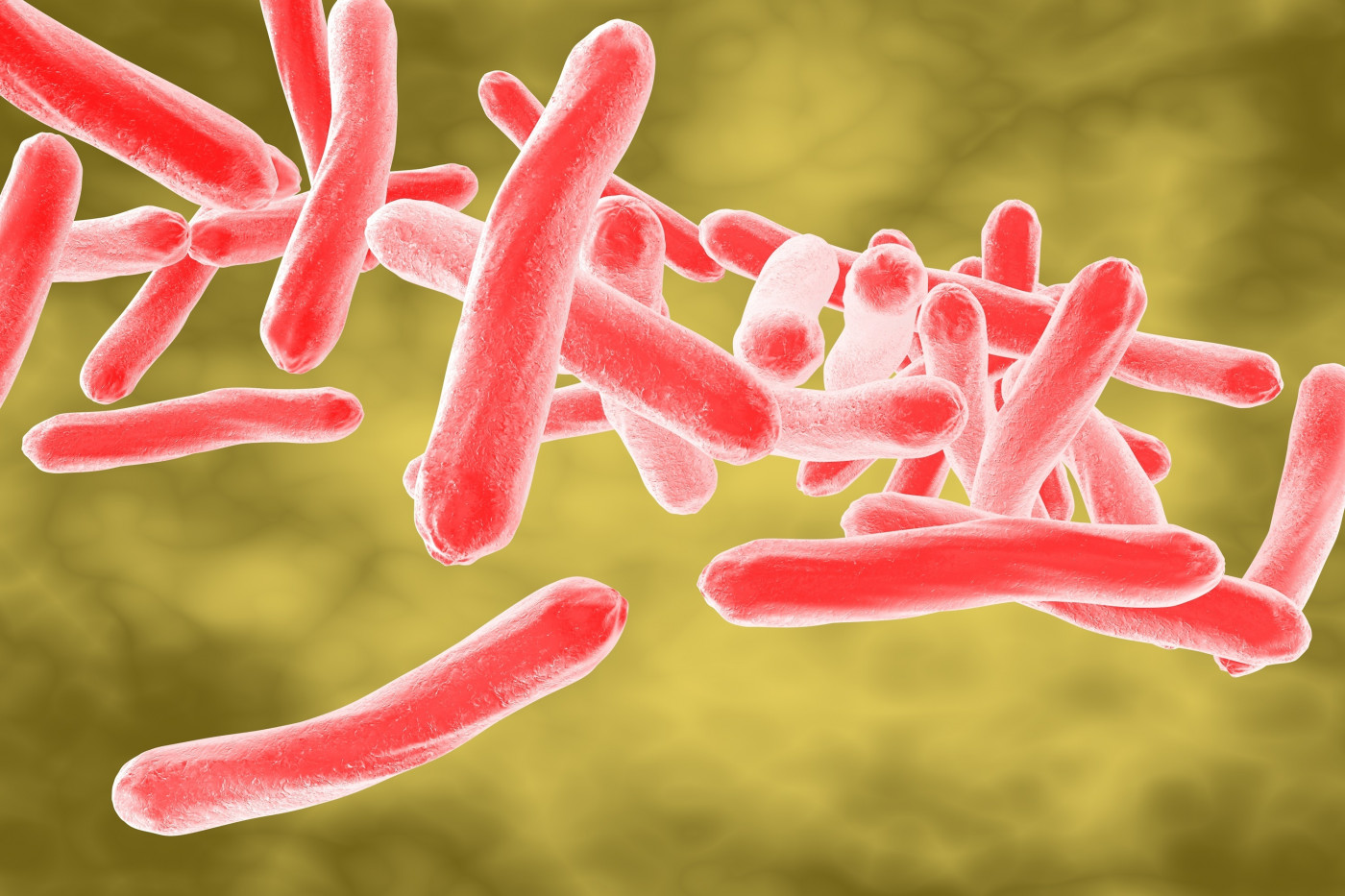Researchers Discover Stress Response Mechanism that Allows Pseudomonas Bacteria to Evade Antibiotics
Written by |

Researchers have discovered a stress response mechanism that allows Pseudomonas aeruginosa, a bacteria highly resistant to antibiotics that often causes lung infections in patients with cystic fibrosis (CF), to evade the action of antibiotics and to survive.
The findings were reported in a study, “PQS Produced by the Pseudomonas aeruginosa Stress Response Repels Swarms Away from Bacteriophage and Antibiotics,” which was published in the Journal of Bacteriology.
Antimicrobial resistance is a major public health concern that has led to a reduction in the use of antimicrobial agents to minimize the chances of new multi-drug-resistant strains of pathogens. People with CF are particularly susceptible to lung infections, which are often caused by multi-resistant strains of bacteria that are hard to eliminate.
P. aeruginosa is an opportunistic human pathogen that is responsible for the majority of lung infections in people with CF.
“Strains of P. aeruginosa have been identified that are resistant to all classes of antibiotics, making the development of new therapeutics an important priority,” the investigators wrote.
Like other species of bacteria, P. aeruginosa spreads and grows by swarming, a process that describes the rapid, collective, and coordinated movement of a group of bacteria. While swarming, bacteria produce several substances that control how different bacteria sub-groups within the aggregate move individually.
In the study, researchers discovered that if attacked while swarming — by an antibiotic or a virus that infects bacteria (bacteriophage) — P. aeruginosa bacteria start producing a molecule called Pseudomonas quinolone signaling (PQS) that tells other bacteria in the group to steer away from danger.
The researchers believe that this stress response mechanism is part of the reason why P. aeruginosa is so hard to eliminate with antibiotics and has become resistant to many of them over time.
“We can see in the laboratory that the bacteria simply swim around the ‘dangerous area’ with antibiotics or bacteriophages. When they receive the warning signal from their conspecifics, you can see in the microscope that they are moving in a neat circle around. It is a smart survival mechanism for the bacteria,” Nina Molin Høyland-Kroghsbo, assistant professor of Veterinary and Animal Sciences at the University of Copenhagen, and part of the research talent program UCPH-Forward, said in a news story.
“If it turns out that the bacteria use the same evasive maneuver when infecting humans, it may help explain why some bacterial infections cannot be effectively treated with antibiotics,” she added.
In their experiments, researchers from the University of Copenhagen in collaboration with investigators from the University of California Irvine studied the movement patterns of P. aeruginosa aggregates in petri dishes that mimicked the environment these bacteria would come across in the lungs of people with CF.
After studying these movement patterns, they found that healthy bacteria consistently steered away from bacteriophage-infected bacteria, as well as from those that had been killed by antibiotics.
In addition, the team discovered that in both cases, bacteria that had been attacked produced large amounts of PQS that repelled the movement of healthy swarms of bacteria into the affected area.
“The stress response observed here could increase P. aeruginosa resilience against antibiotic treatment and phage therapy in healthcare settings, as well as provide a simple evolutionary strategy to avoid areas containing stress,” the investigators wrote.
This type of stress response is a key survival mechanism of P. aeruginosa that may be explored further to help scientists find more effective treatments to eliminate these bacteria. The next step is to investigate how to target this communication between bacteria in large aggregates, according to Høyland-Kroghsbo.
“This clears the way for the use of drugs in an attempt to prevent … the warning signal [being] sent out in the first place. Alternatively, you could design substances that may block the signal from being received by the other bacteria, and this could potentially make treatment with antibiotics or bacteriophage viruses more effective,” Høyland-Kroghsbo said.
“Infections with this type of bacteria are a major problem worldwide with many hospitalizations and deaths,” she added. “That is why we are really pleased to be able to contribute new knowledge that can potentially be used to fight these bacteria.”






